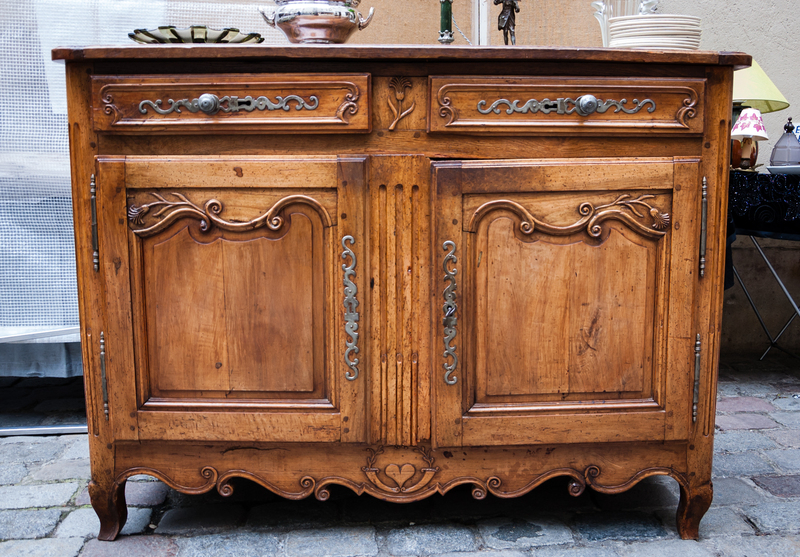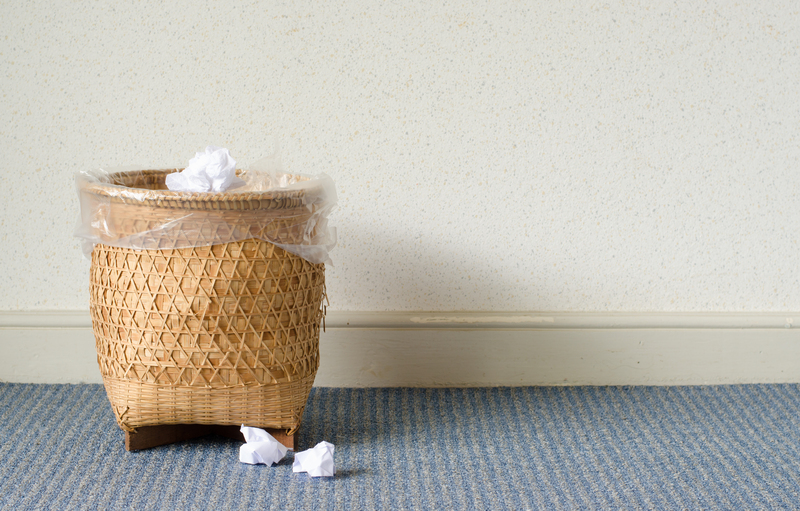Avoid the Rebound: Tips for Managing Clutter Long Term
Decluttering is a suitable way to transform not only your space, but also your peace of mind. However, many people experience the "rebound"--where clutter comes back, often worse than before. If you're determined to maintain an organized, clutter-free home for the long haul, this comprehensive guide is for you. Here's everything you need to know to avoid clutter rebounding, establish effective routines, and foster environments that support lasting tranquility.
Understanding the Clutter Rebound Effect
Before diving into sustainable solutions, it's vital to grasp why clutter rebounds in the first place. The "clutter rebound effect" is the phenomenon where, after a burst of organizing or decluttering, new clutter builds up--sometimes quite rapidly. Let's consider the root causes:
- Lack of habit change: Tidying up does not always alter daily habits, allowing clutter to accumulate again.
- Emotional attachments: Sentimentality often makes it difficult to let go of items, leading to gradual buildup.
- Impulse shopping: Acquiring new items without thoughtful intention resupplies clutter zones.
- Poor storage solutions: If every item doesn't have a logical home, new messes take root quickly.
- Overambitious goals: Large, unsustainable efforts create burnout, rather than lasting change.
Understanding these issues is the first step to long-term clutter management. Now let's explore actionable strategies.

Strategies for Managing Clutter Long Term
1. Make Decluttering a Continuous Process
Instead of massive, infrequent clear-outs, treat clutter control as a routine. Schedule regular sessions--weekly, monthly, or seasonally--where you review and tidy specific zones. Success lies in consistency. Consider:
- 10-Minute Daily Declutter: Pick an area each day and tidy for just 10 minutes. Small, manageable actions prevent overwhelm.
- Monthly Focus: Each month, target different spaces--kitchen, closets, garage--for a more thorough review.
- Annual Audit: Once a year, perform a full walkthrough. Is everything you own still serving you?
2. Recognize and Address Emotional Clutter
Many people hang onto possessions for deeply personal reasons. Learning to distinguish valuables from "just-in-case" items or sentimental clutter is key to sustainable decluttering.
- Memory Storage: Designate a small box or area for truly meaningful items.
- Photograph Memories: Take photos of treasured but impractical items, then let go of the physical object.
- Journal the Story: Write about why an item matters. Sometimes the story itself is more valuable than the object.
3. Create Smart Storage Solutions
Efficient storage is crucial for managing clutter for the long term. Everything should have a clear home. Aim for:
- Accessibility: Items used every day should be easy to reach.
- Visibility: Transparent containers, labels, and open shelving combat "out of sight, out of mind."
- Utility: Use baskets, drawer dividers, and hooks to categorize and contain specific items.
Inadequate storage leads to "temporary placement"--which is often how clutter starts.
4. Practice Mindful Acquisition
Preventing the purchase (or acquisition) of new clutter is just as important as removing excess belongings. Adopt a mindful approach to shopping and accepting gifts:
- Adopt a One-in, One-out Rule: For every new item brought in, donate or dispose of one existing item.
- Waitlist Purchases: Add desired items to a list, then wait several days. If you still want it after, consider buying.
- Communicate Gift Preferences: Suggest experiences instead of physical gifts to friends and family.
5. Build New Habits
Long-term clutter control relies on habit formation. Integrate organizational practices into your daily or weekly routines:
- Tidy as You Go: Don't put it down--put it away. Train yourself and your family to return items after use.
- Establish Drop Zones: Designate a place near the entrance for bags, keys, and shoes to prevent pile-ups.
- Daily Resets: Spend a few minutes each evening resetting each main living area to "zero clutter."
Troubleshooting Common Clutter Challenges
Not Enough Space
Living in a small home or apartment? Space constraints require extra discipline:
- Minimalism: Keep only multipurpose or beloved items.
- Vertical Storage: Use shelves to free up precious floor space.
- Furniture with Storage: Choose pieces with built-in drawers or compartments.
Family or Roommate Resistance
Long-term organization is easier when housemates cooperate. If they're not on board:
- Lead by Example: Keep your own areas tidy.
- Designate Zones: Create individual spaces to respect personal habits.
- Open Communication: Share why managing clutter is important to you--emphasizing benefits for everyone.
Digital and Paper Clutter
Physical spaces aren't the only places where clutter builds up. Paperwork, emails, and digital files can become overwhelming.
- Paperless Systems: Go digital with bank statements, bills, and receipts whenever possible.
- Weekly Digital Declutter: Delete old emails, files, and apps. Organize documents in folders.
- Mail Drop Zone: Open and sort mail immediately to avoid pile-ups on counters or desks.
The Benefits of Long-Term Clutter Management
Why put so much emphasis on managing clutter long term? Here are some science-backed rewards and everyday advantages you'll gain:
- Reduced Stress: Visual clutter can create mental clutter, making it harder to relax.
- Improved Productivity: Tidier work spaces boost efficiency and concentration.
- More Time: Less searching for misplaced items means more time for things you enjoy.
- Financial Savings: You avoid rebuying lost items and impulse purchases.
- Greater Satisfaction: Organized environments contribute to a sense of calm and control.
Decluttering Tips for Specific Spaces
Kitchen
- Clear Countertops: Store small appliances out of sight to free up workspace.
- Containerize: Use bins for snacks, pantry items, and utensils.
- Purge Unused Gadgets: Donate or recycle duplicates and worn-out tools.
Bedroom
- Edit Wardrobe Seasonally: Remove unworn clothes and rotate by season.
- Under-Bed Storage: Use clear bins for linens or out-of-season clothes.
- Keep Nightstands Clutter-Free: Limit to essentials--lamp, book, and glasses.
Living Room
- Use Storage Ottomans: Hide blankets, magazines, and toys.
- Curate Decor: Display only loved, meaningful pieces.
- Limit Surfaces: Keep tables and shelves clear other than a few select items.
Office
- File Immediately: Don't let paperwork accumulate.
- Desk Drawer Organizers: Assign a place for every supply.
- Cable Management: Tame cords with clips, boxes, or ties.
Maintaining Motivation: Staying the Clutter-Free Course
Staying motivated can be tough, especially in busy periods of life. Try these ideas:
- Celebrate Progress: Take before-and-after photos to appreciate ongoing improvement.
- Share Goals: Tell a friend or family member about your clutter management plans for accountability.
- Remind Yourself Why: Write down the benefits you're experiencing--less stress, quicker cleanups, etc.--and revisit them often.
- Allow Flexibility: Perfection isn't required. Focus on progress over time, not rigid standards.
Expert Tips for Long-Term Clutter Prevention
- Embrace Minimalism: Regularly ask yourself: "Do I use this? Do I love this?"
- Practice Gratitude: Appreciate what you have, which discourages unnecessary accumulation.
- Declutter with a Friend: A buddy can provide support, accountability, and even make the process fun.
- Educate Your Household: Teach kids and adults alike about organization basics and the benefits of owning less.

Long-Term Clutter Management: Frequently Asked Questions
How often should I declutter?
Avoiding rebound clutter requires regular attention. Schedule mini-sessions weekly, prioritize deep cleaning monthly, and do a comprehensive review once a year. The best schedule is the one you'll stick to.
What if I don't have time?
Micro-decluttering is your friend. Even five minutes daily adds up over the months. Consistency always wins over sporadic, exhausting projects.
How can I get family members involved?
Frame clutter management as a way to make everyone's life easier. Create joint routines, involve kids in organizing their own toys, or even turn it into a game with rewards for participation.
What if I get overwhelmed?
Start small. Tackle one drawer, shelf, or area at a time. If needed, ask for help from a friend, family member, or a professional organizer.
Conclusion: Embracing a Clutter-Free Lifestyle, Long Term
It's easy to slip back into old habits after a big organizational push. But long-term success isn't about occasional deep cleans--it's about creating sustainable systems, routines, and habits. By making clutter management a part of your everyday life and addressing the root causes of rebound, you can enjoy peace, productivity, and pride in your home for years to come.
Remember: the journey to a clutter-free life is a marathon, not a sprint. With intentionality, consistency, and the tips above, you can finally stop the cycle of rebound and make lasting order a reality.